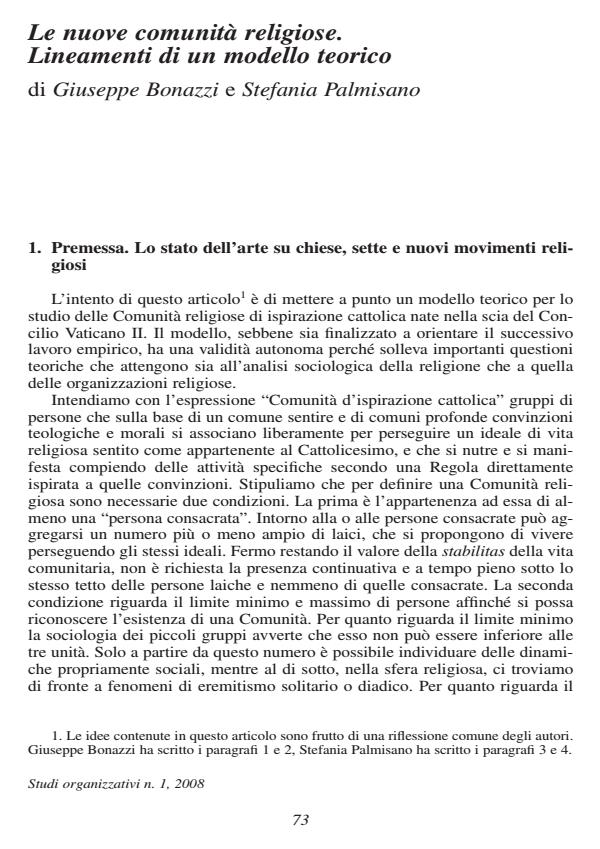Le nuove comunità religiose. Lineamenti di un modello teorico
Journal title STUDI ORGANIZZATIVI
Author/s Giuseppe Bonazzi, Stefania Palmisano
Publishing Year 2008 Issue 2008/1
Language Italian Pages 24 P. 73-96 File size 146 KB
DOI
DOI is like a bar code for intellectual property: to have more infomation
click here
Below, you can see the article first page
If you want to buy this article in PDF format, you can do it, following the instructions to buy download credits

FrancoAngeli is member of Publishers International Linking Association, Inc (PILA), a not-for-profit association which run the CrossRef service enabling links to and from online scholarly content.
The article has two aims: 1. to propose a theoretical model for the study of the religious communities of Catholic inspiration that arose in Italy in the wake of Vatican Council II (1963-65). These are ‘new’ phenomena generated by strong social ferment and directly promoted not by the ecclesiastical authorities but by prominent religious or secular personalities operating outside the traditional structures. Significant novelties are also apparent in their organizational orders: a widespread and distinctive feature is that they are mixed, or rather composed of men and women, consecrated and secular, single and married, and sometimes of Christians of different confessions; 2. to furnish indications for the study of Catholic religious organizations. Examined in light of the organizational literature are the connections among issues of particular importance, and with a long theoretical traditions in this field of inquiry: legitimation, innovation, efficiency, and success
Giuseppe Bonazzi, Stefania Palmisano, Le nuove comunità religiose. Lineamenti di un modello teorico in "STUDI ORGANIZZATIVI " 1/2008, pp 73-96, DOI: